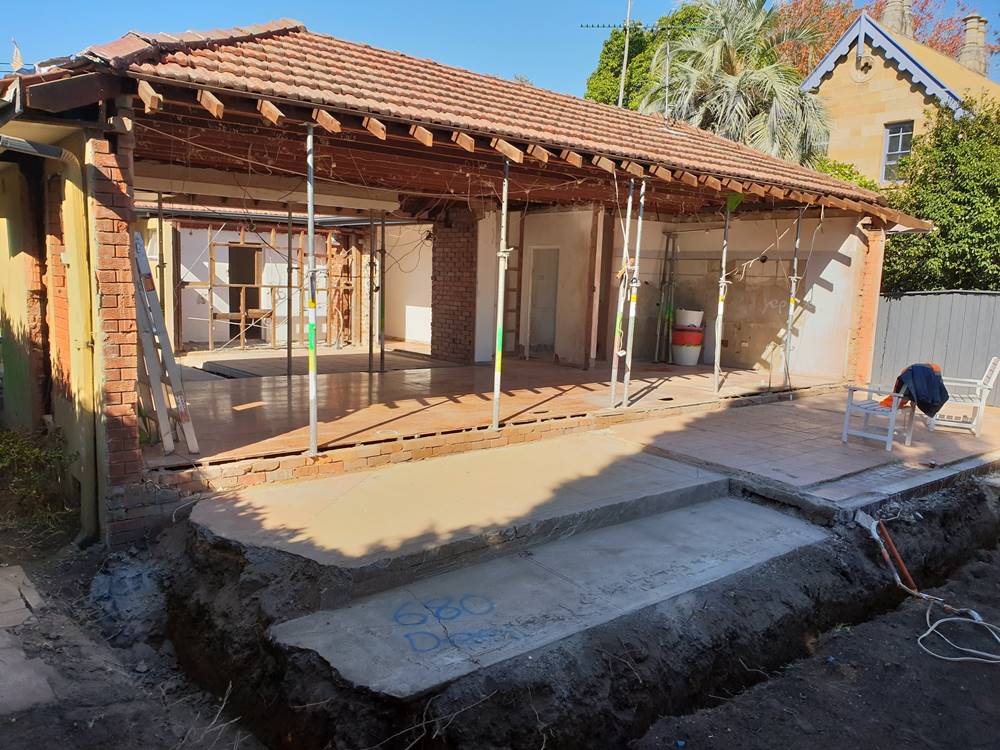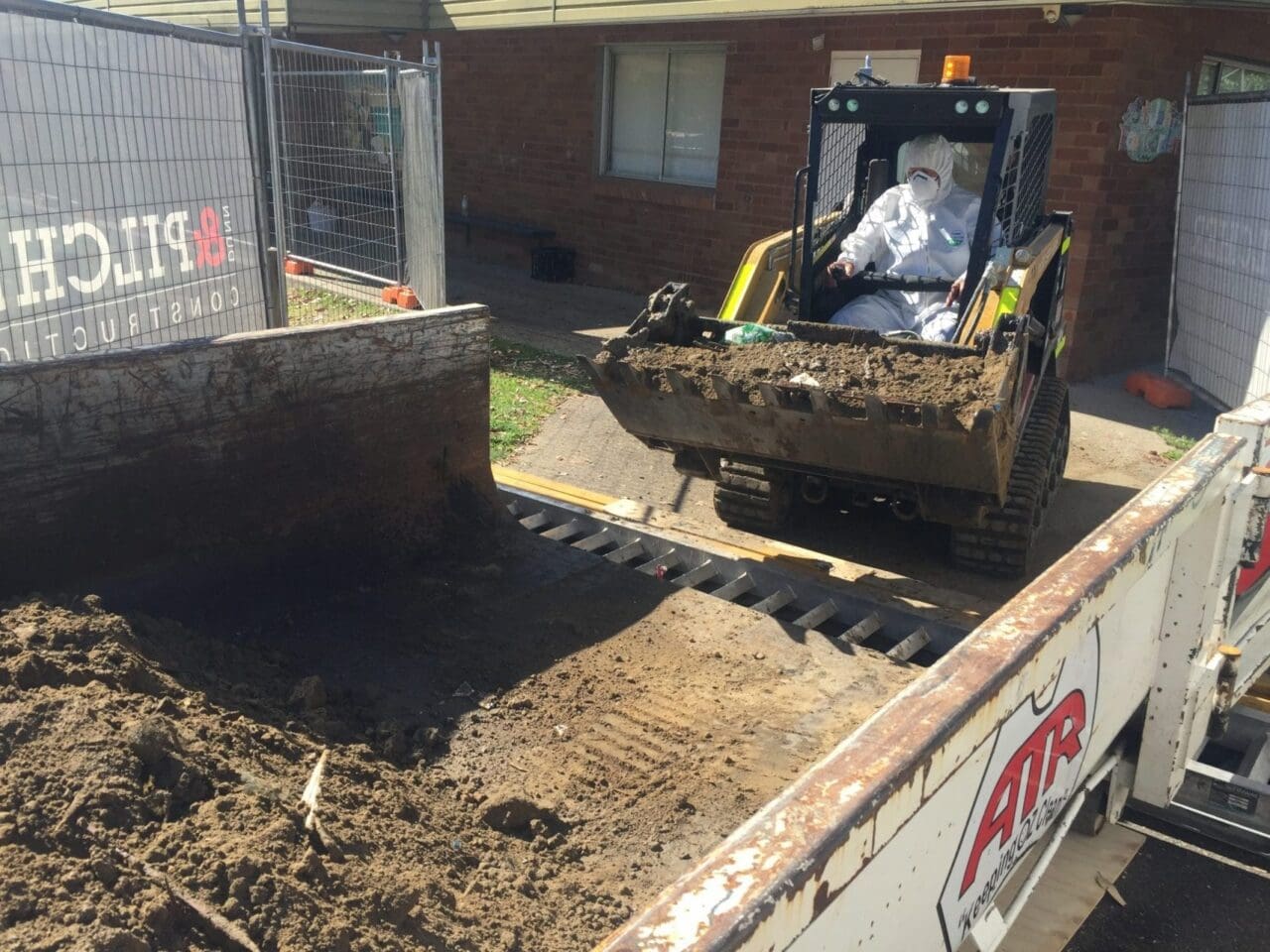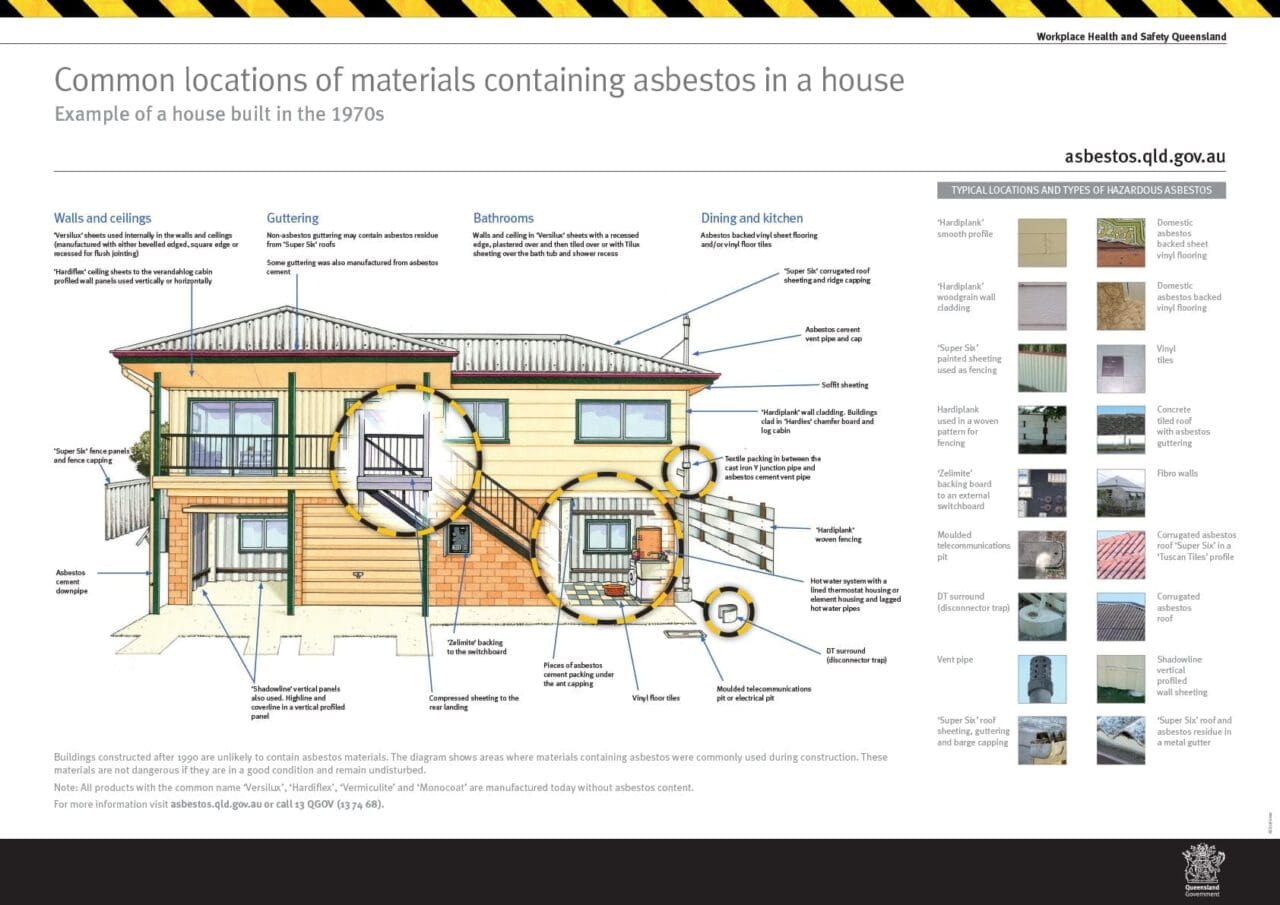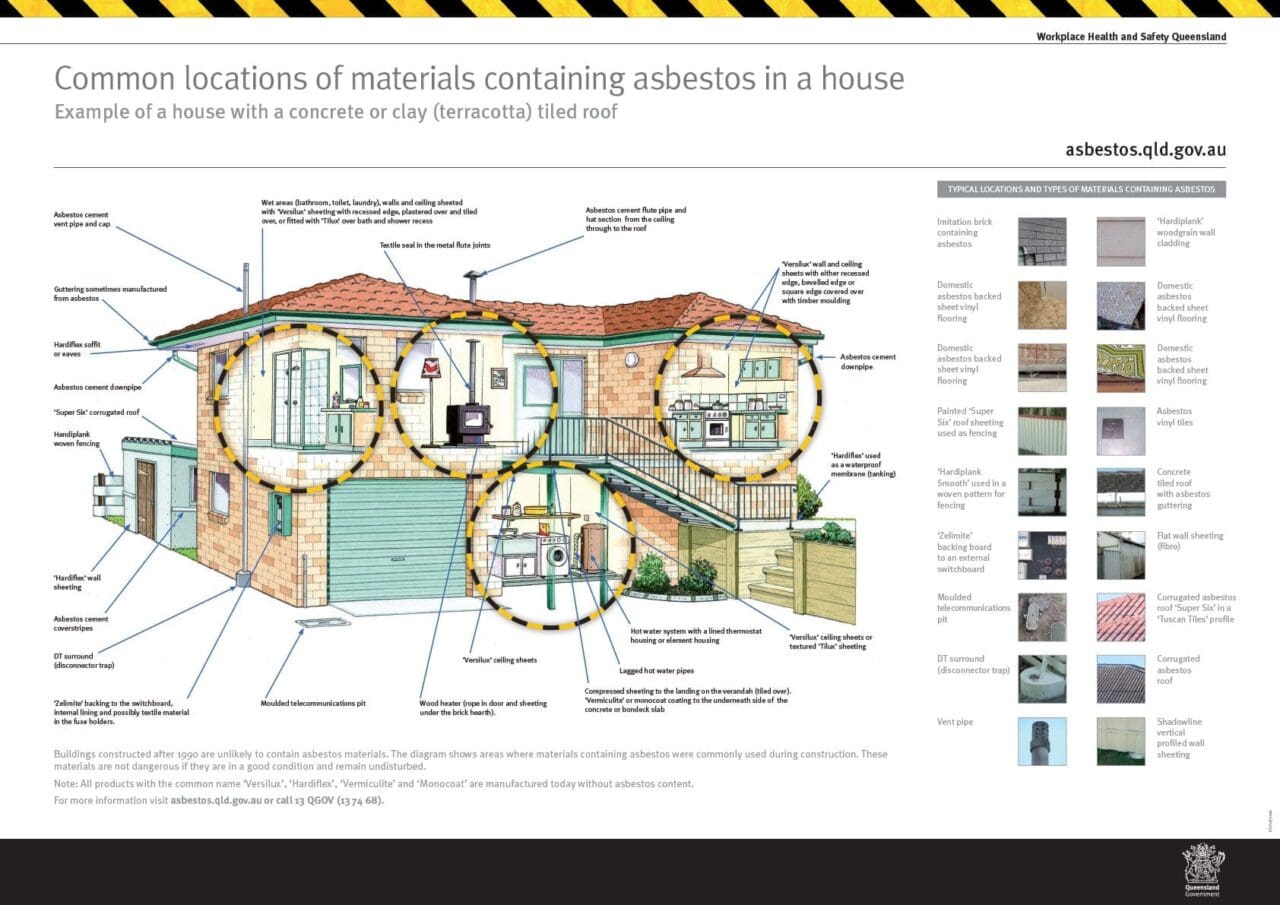Asbestos Demolition & Asbestos Removal Services in Sydney
ATR is a long established, reputable asbestos removal company that prides itself on its experience & commitment to safety. ATR is a fully licensed & insured bonded asbestos removal company accredited to AS/NZS 4801 – Safety, ISO 9001 – Quality & ISO 14001 – Environment. Although we are not licensed Friable Asbestos removalists Sydney, we are happy to recommend other professional contractors in the Sydney area.
If you are unsure if you have an asbestos product or what asbestos removal services, if any, you may require then we always offer free advice over the phone or email. When it’s possible to do just email a photo to info@atr.com.au & it may end up saving you money.
ATR offers the following asbestos removal services:
Our staff are highly trained asbestos removal Sydney specialists supported by an award winning WHS Management System & an externally accredited Integrated Management System (IMS). This means you can rest assured your asbestos removal Sydney project will be handled safely & efficiently by professional asbestos removalist contractors.
Asbestos Pick-Up
Along with our other asbestos disposal services, ATR also offers a pick up & asbestos disposal Sydney service for asbestos that has already been removed. There are 2 ways in which we can collect the asbestos waste
- Unwrapped; or
- Fully wrapped
If you or your contractor would like to prepare the asbestos for disposal, please ensure the asbestos is correctly bagged or wrapped for disposal. To correctly dispose of bonded asbestos, it must be:
- When asbestos is handled or removed it must be wetted/dampened to ensure the asbestos fibres cannot become airborne.
- Double wrapped or bagged in 200μm (micron) thick plastic ensuring it is completely airtight & sealed (be cautious of sharp edges that can pierce the plastic).
- Wet the exterior of the plastic to suppress any fibres on the outside.
- Be manageable for a 1 man lift (approx. 20-25kgs)
If you prefer, we can take care of the wrapping, please ensure the asbestos is stabilised. This requires the asbestos to remain damp & completely covered in plastic to minimise the chance of the asbestos fibres becoming airborne.
Asbestos Demolition
Under the current Workplace Health & Safety Act 2011, an appropriately licensed asbestos removalist Sydney must be engaged to carry out non-friable (bonded) asbestos removal work if the quantity to be removed is more than 10m2.
ATR has been safely removing asbestos containing material (ACM) all over NSW for over 20 years specialising in the removal of non-friable asbestos containing material from homes & workplaces.
Our staff are highly trained asbestos removal specialists in Sydney supported by an award winning WHS Management System. This means you can rest assured your asbestos removal Sydney project will be handled safely & efficiently by professional asbestos removalist contractors.
Not only can we safely remove your asbestos material but we are also licensed demolishers that can demolish the entire structure or provide detailed demolition for part of the structure. Refer to our demolition service webpage for more information.
The most common uses of Asbestos Containing Materials (ACM’s) in the home or workplace include:
- Many purpose-built structures such as garages, sheds, external laundries & toilets
- Roofing
- Cladding
- Eaves linings
- Fencing
- Wet areas (bathroom & laundry)
- Kitchens
- Vinyl tiles
- Formwork for concrete paths & slabs
Sparrow Picking
Sparrow picking is simply the process of removing any loose & broken pieces of ACM (asbestos containing material) from the surface of a given area. It’s typical to perform this type of work when there has been an illegal dumping or a broken asbestos sheet sitting on top of an area of dirt or grass.
Excavation
ATR can provide the necessary plant & equipment to excavate any soils contaminated with asbestos. Asbestos in soil requires a comprehensive hygienist report to identify if it is bonded or friable & to also identify if there are any other contaminants in that soil (such as leads or petrochemicals).
If required, these work areas can be remediated, bringing it back to pre-excavation levels with clean, validated soils.
Vacuuming & Sealing
ATR provide trained & competent staff when there is a need to clean up dust containing asbestos. It is not a common request but is done from time to time & may be a result of some damaged asbestos sheets that have crumbled on to a hard surface below. Often it’s mentioned in a hygienist’s report & may also require the broken/damaged edges of any sheets to be painted or glued to prevent any further asbestos contamination in that area.
Larger areas, such as roof cavities, require an industrial vacuum & we are able to offer free advice should you require this asbestos disposal Sydney service.
Asbestos Clearance Certificate
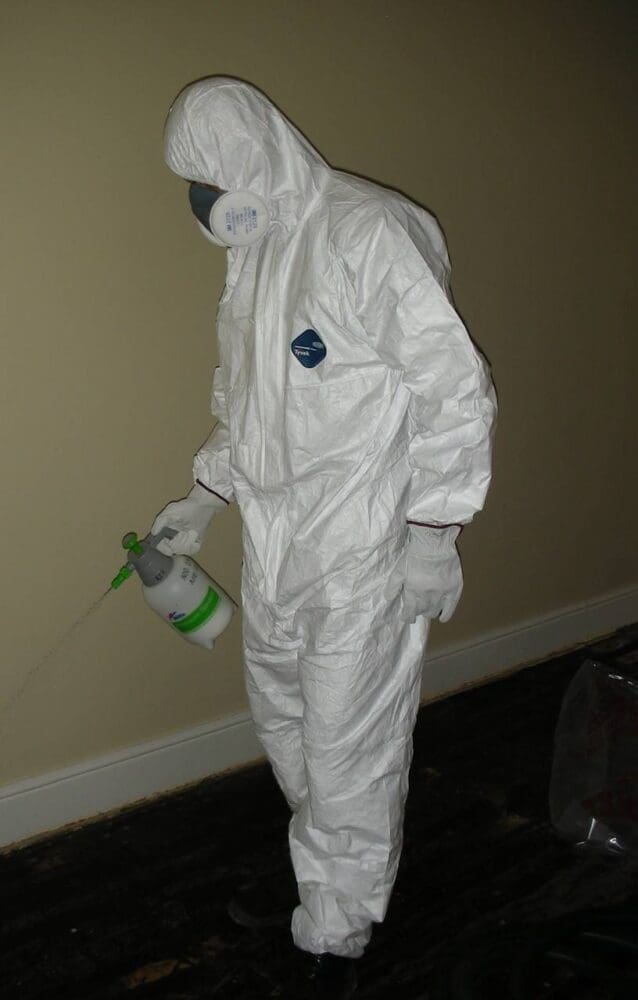 When bonded asbestos is removed & the removed area is greater than 10m2, an asbestos clearance certificate is required by law as evidence the area is no longer contaminated. This certificate is to be provided by a 3rd party (not the licensed contractor), usually a registered hygienist, who is responsible for providing written verification that the work was satisfactorily completed & that the area is safe to occupy. It is not required by law for work for that is less than 10m2 in area should be considered to ensure safety. ATR are happy to provide any asbestos removal advice on this or you can go to the SafeWork NSW website https://www.safework.nsw.gov.au/hazards-a-z/asbestos for further information.
When bonded asbestos is removed & the removed area is greater than 10m2, an asbestos clearance certificate is required by law as evidence the area is no longer contaminated. This certificate is to be provided by a 3rd party (not the licensed contractor), usually a registered hygienist, who is responsible for providing written verification that the work was satisfactorily completed & that the area is safe to occupy. It is not required by law for work for that is less than 10m2 in area should be considered to ensure safety. ATR are happy to provide any asbestos removal advice on this or you can go to the SafeWork NSW website https://www.safework.nsw.gov.au/hazards-a-z/asbestos for further information.
Asbestos Air Monitoring
Air Monitoring is required at all times for friable asbestos removal Sydney & although recommended for bonded asbestos removal Sydney, it’s not mandatory. On some bonded asbestos removal projects it may be necessary to conduct air monitoring to ensure public safety.A few examples are when works are performed in sensitive areas like schools, hospitals & public places. Sampling for airborne asbestos fibres is carried out to assess the asbestos health risk associated with the presence of atmospheric asbestos fibres. These samples are then analysed at a NATA accredited laboratory.
ATR can organise several types of air monitoring including:
- Background air monitoring – assess the presence of asbestos fibres prior to the removal of asbestos
- Exposure monitoring – sampling exposure to asbestos fibres in a person’s breathing zone
- Control monitoring – Air monitoring carried out in the areas surrounding any asbestos disposal Sydney project. Used to verify the effectiveness of the engineering controls implemented to ensure that no asbestos fibres escape the asbestos removal zone
Whatever your air monitoring requirements, ATR has the solution.
Asbestos Sampling & Analysis
With many building products from the past containing asbestos, it can sometimes be difficult to identify asbestos containing material with certainty.
ATR is able to offer competitive sampling & asbestos inspection services to identify the presence of asbestos containing materials (ACM). Depending on the availability of accurate information, there are 2 options for identifying ACM.
Firstly, the only certain way to determine if a product contains asbestos is to have a sample tested & analysed in a NATA accredited laboratory.
Another way to determine if asbestos is present in a home or workplace, is by having a competent person inspect the premises where they will look for several key factors to indicate the likelihood of asbestos being present. These main factors are:
- The age of the structure – the vast majority of homes built from 1944 up to the late 1970’s (up to 2/3 of all homes!) used asbestos building products.
- The date of any renovations – manufacturing of building products containing asbestos were phased out during the 1980’s but surviving stock may have been used even into the 1990’s.
- The product itself – some building products are known to contain asbestos & are easily & accurately identified.
By talking with one of our consultants, we can recommend a suitable course of action.
Asbestos Register & Management Plans
As a result of the changes made under the Workplace Health & Safety Act & Regulations (2011), all workplaces in NSW are required to have an up to date (and reviewed every 12 months) asbestos register that contains information relating to:
- Identifying asbestos containing materials within the workplace
- Assessing the risk to health for each asbestos instance identified
- Recommending measures to control the risk to health if required
ATR can provide professional services to inspect workplaces & establish or update asbestos registers & Asbestos Management Plans.
An asbestos register is a document which contains information on Asbestos Containing Material (ACM) within a building that is likely to contain asbestos & must be held onsite for buildings that contain asbestos to comply with NSW SafeWork requirements. The person with management or control of a workplace must ensure an asbestos register is prepared and kept at the workplace.
An asbestos management plan must be developed where asbestos has been identified or is likely to be present at the workplace. The asbestos management plan is to be readily accessible to workers, health and safety representatives, other PCBUs and SafeWork NSW.
The asbestos management plan must include:
- The identification of asbestos or ACM
- Decisions and reasons for decisions about the management of asbestos
- Procedures for dealing with incidents or emergencies
- Workers carrying out work involving asbestos.
It is to be reviewed when there is a:
- Change in the control measure
- If the asbestos is removed or disturbed
- When the plan is no longer adequate
- When a health and safety representative request a review,
- Every five years
The purpose of an asbestos register is for identification of asbestos & involves a combination of visual inspection of the accessible areas of the building & the collection materials suspected of containing asbestos for testing. The suspected asbestos samples are then tested by a NATA accredited laboratory.
The asbestos register must:
- record any asbestos that has been identified or is assumed to be present at the workplace
- record the date when the asbestos was identified
- record the location, type and condition of the asbestos
- be maintained to ensure up-to-date information
- state if no asbestos has been identified
- be given to the person conducting a business or undertaking (PCBU) when there is a change of management or controller of the workplace.
Asbestos must be labelled, where possible. For example, a label can be placed in the electrical meter box indicating that the building contains asbestos and the location of the register. Photographs or drawings are also useful for showing the location of asbestos in the workplace.
Common Areas To Find Asbestos
Asbestos in 1970’s homes
Asbestos in homes with a tiled roof
Asbestos in commercial buildings
Asbestos Information
Asbestos is a set of six naturally occurring silicate minerals used commercially for their desirable physical properties.
The prolonged inhalation of asbestos fibres can cause serious illnesses including malignant lung cancer, mesothelioma, & asbestosis. A total ban came into effect in Australia on the 31st December 2003. Asbestos can no longer be imported, used or recycled.
Asbestos became increasingly popular among manufacturers & builders because of its sound absorption, tensile strength, its resistance to fire, heat, electrical & chemical damage & affordability.
Prior to the risks & health hazards of asbestos becoming widely known, asbestos containing materials (ACM’s) were widely used in the construction of many homes & workplaces throughout Australia.
The most common uses of Asbestos Containing Materials (ACM’s) in the home include:
Inside House
- Backing of vinyl sheet floor covering
- Carpet underlay
- Cement flooring
- Compressed asbestos sheet
- Flues to fireplaces
- Insulation below wood heater
- Internal and external ventilators
- Internal angle mouldings
- Internal walls & ceiling
- Kitchen splashback
- Loose fill insulation in roof cavity
- “Tilux” marble finish wall panel
- Vinyl floor tilesWall sheeting – internal
Outside House
- Backing for electrical meter boards
- Dog kennel
- Downpipes
- Eaves and gables ends
- External angle mouldings
- Fences
- Garage
- Gutters
- Insulation for hot water pipes and tank
- Internal and external ventilators
- Ridge capping
- Sheds & external toilets
- Wall sheeting – external
Refer to our ‘common locations’ images for further information on where asbestos products may be used in the home & workplace. (provided by WorkCover QLD)
Airborne asbestos means any fibres of asbestos small enough to be made airborne. For the purposes of monitoring airborne asbestos fibres, only respirable fibres are counted.
Asbestos means the asbestiform varieties of mineral silicates belonging to the serpentine or amphibole groups of rock forming minerals, including actinolite asbestos, grunerite (or amosite) asbestos (brown), anthophyllite asbestos, chrysotile asbestos (white), crocidolite asbestos (blue) & tremolite asbestos or a mixture of any of these.
Asbestos containing material (ACM) means any material or thing that, as part of its design, contains asbestos.
Asbestos-contaminated dust or debris (ACD) means dust or debris that has settled within a workplace & is (or is assumed to be) contaminated with asbestos. Asbestos-related work means work involving asbestos (other than asbestos removal work to which Part 8.7 of the WHS Regulations applies) that is permitted under the exceptions set out in regulation 419(3), (4) & (5).
Asbestos removalist means a person conducting a business or undertaking who carries out asbestos removal work.
Asbestos removal work means:
- work involving the removal of asbestos or ACM
- Class A asbestos removal work or Class B asbestos removal work as outlined in Part 8.10 of the WHS Regulations.
Competent person in relation to carrying out clearance inspections under regulation 473 means a person who has acquired through training or experience the knowledge & skills of relevant asbestos removal industry practice & holds a certification in relation to the specified VET course for asbestos assessor work or a tertiary qualification in occupational health & safety, occupational hygiene, science, building, construction or environmental health. For all other purposes, competent person means a person who has acquired through training, qualification or experience, the knowledge & skills to carry out the task.
Exposure standard for asbestos is a respirable fibre level of 0.1 fibres/ml of air measured in a person’s breathing zone & expressed as a time weighted average fibre concentration calculated over an eight-hour working day & measured over a minimum period of four hours in accordance with:
- the Membrane Filter Method
- A method determined by the relevant regulator.
Friable asbestos means material that is in a powder form or that can be crumbled, pulverised or reduced to a powder by hand pressure when dry, & contains asbestos.
GHS means Globally Harmonised System of Classification & Labelling of Chemicals.
Licensed asbestos assessor means a person who holds an asbestos assessor licence.
Licensed asbestos removalist means a person conducting a business or undertaking who is licensed under the WHS Regulations to carry out Class A or Class B asbestos removal work.
Naturally occurring asbestos (NOA) means the natural geological occurrence of asbestos minerals found in association with geological deposits including rock, sediment or soil.
Non-friable asbestos means material containing asbestos that is not friable asbestos, including material containing asbestos fibres reinforced with a bonding compound.
Respirable asbestos means an asbestos fibre that:
- is less than 3-micron metres (µm) wide
- more than 5-micron metres (µm) long
- Has a length to width ratio of more than 3:1.
Asbestos use in human culture dates back at least 4,500 years, when evidence shows that inhabitants of the Lake Juojärvi region in East Finland strengthened earthenware pots & cooking utensils with the asbestos mineral anthophyllite. The word asbestos comes from ancient Greek meaning “unquenchable” or “inextinguishable”. The naming of minerals was not very consistent in ancient times. In both modern & ancient Greek, the usual name for the material known in English as “asbestos” is amiantos (“undefiled”, “pure”).
The term asbestos is traceable to Roman naturalist Pliny the Elder’s manuscript Natural History, & his use of the term asbestinon, meaning “unquenchable”. However, asbestos has been known by many other names including: “mountain leather,” “incombustible linen,” & “rock floss.” The name of chrysotile, one of the most common forms of asbestos, is derived from the Greek words “chrysos” (gold) & “tilos” (fibre) or “gold fibre.”
Asbestos was used by many different cultures for hundreds of purposes. The Egyptians embalmed pharaohs with asbestos & the Persians imported asbestos from India for wrapping their dead. They thought it was hair from a small animal that lived by fire & died by water.
In medieval times asbestos was used extensively as insulation in suits of armour.
Unscrupulous merchants made it into crosses that they advertised as having been made from “the true cross.” Some forms of asbestos look like old wood, & merchants claimed that their resistance to fire was proof that these “wooden crosses” came from cross on which Christ was hung.
Near the end of the 19th century, the use asbestos became even more widespread as a result of the industrial revolution. Asbestos was used in the manufacture of more than 3000 products including textiles, building materials, insulation & brake linings. Its use continued to increase through the 1970s. At that time the evidence against asbestos as a health hazard (it was found to cause asbestosis & mesothelioma) could no longer be denied, & its use fell into sudden decline.
Interestingly enough, the hazards of asbestos were recorded as early as Roman times. Both Pliny the Elder & the first century geographer Strabo noted that workers exposed to asbestos had many health problems. Pliny the Elder recommended that quarry slaves from asbestos mines not be purchased because “they die young.” Lung ailments were common to anyone who worked with asbestos fibres.
Asbestos Removal in Australia
Asbestos was first mined in Australia beginning in the 1880s in Jones Creek, New South Wales. Over the next 100 years, New South Wales would produce the largest tonnages of mined chrysotile asbestos in the country.
In 1937, asbestos was discovered in Wittenoom, Western Australia, and by 1939, major mining of the mineral in Wittenoom Gorge had begun. Wittenoom was Australia’s only supplier of crocidolite, or “blue asbestos,” now known to be the deadliest form of asbestos.
A company town was built around the mine in Wittenoom in 1947 to house workers and their families. Most miners were unaware of the risks associated with direct and indirect asbestos exposure until the mine closed down in 1966, amidst suspicions that asbestos was causing major health problems in miners and their families. Through much of the 20th century, Australia was a major user of a great variety of asbestos products, most of which were imported from the United States, the United Kingdom, Germany and Japan. Asbestos-containing products often imported by Australia included asbestos cement, rope, yarn, fabric, friction materials, gaskets and millboard.
Asbestos was also imported in raw fibre form from Canada (chrysotile) and South Africa (crocidolite and amosite) until the 1960s, when the import of asbestos materials finally declined.
Australia’s post-World War II consumption of asbestos was very high, with an estimated 70,000 asbestos cement homes built in New South Wales in the year 1954 alone. After World War II, half of all homes built in New South Wales were made of asbestos cement, and until the 1960s, one-quarter of all new homes in Australia were clad in asbestos cement. Many of those homes still stand today and contain the toxic mineral.
A total ban came into effect in Australia on the 31st December 2003. Asbestos can no longer be imported, used or recycled.
Six minerals types are defined as “asbestos” including those belonging to the serpentine class and those belonging to the amphibole class. All six asbestos mineral types are known to be human carcinogens.
Serpentine
Serpentine class fibres are curly. Chrysotile is the only member of the serpentine class.
Chrysotile
Chrysotile is obtained from serpentinite rocks which are common throughout the world. Chrysotile appears under the microscope as a white fibre.
Chrysotile has been used more than any other type and accounts for about 95% of the asbestos found in buildings in America. Chrysotile is more flexible than amphibole types of asbestos, and can be spun and woven into fabric. Its most common use has been in corrugated asbestos cement roof sheets typically used for purpose-built structures such as garages, sheds, external laundries & toilets. It may also be found in sheets or panels used for ceilings and sometimes for walls and floors. Chrysotile has been a component in joint compound and some plasters. Numerous other items have been made containing chrysotile, including brake linings, fire barriers in power boxes, pipe insulation, floor tiles, and gaskets for high temperature equipment.
Amphibole class fibres are needle-like. Amosite, crocidolite, tremolite, anthophyllite and actinolite are members of the amphibole class.
Amosite, often referred to as brown asbestos, is a trade name for the amphiboles belonging to the cummingtonite-grunerite solid solution series, commonly from South Africa, named as an acronym for “Asbestos Mines of South Africa”. Amosite is seen under a microscope as a grey-white vitreous fibre. It is found most frequently as a fire retardant in thermal insulation products, asbestos insulating board and ceiling tiles.
Crocidolite is the fibrous form of the amphibole riebeckite, found primarily in southern Africa, but also in Australia and Bolivia. Crocidolite is seen under a microscope as a blue fibre.
Crocidolite commonly occurs as soft friable fibres. Asbestiform amphibole may also occur as soft friable fibres but some varieties such as amosite are commonly straighter.
Other materials
Other regulated asbestos minerals, such as tremolite asbestos; actinolite asbestos, and anthophyllite asbestos; are less commonly used industrially but can still be found in a variety of construction materials and insulation materials and have been reported in the past to occur in a few consumer products.
NSW Government
Advocacy groups
Mesothelioma support
- Pleural Mesothelioma Center (USA)
- Mesothelioma Australia
- MesotheliomaHelp.org
- MesotheliomaSymptoms.com
Federal Government
Industry Associations


